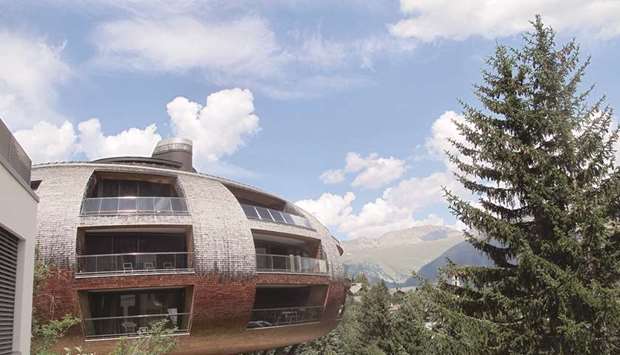But the luxurious ski and holiday resort, traditionally favoured by the rich and famous, is actually getting less cool, in more ways than one. Climate change means there’s less snow, and the resort’s usual clientele are becoming less reliable.
After a slump in hotel bookings in 2015, the resort ended the 2015/16 winter season – when many hotels make around 70 per cent of their profits – down 5.3 per cent on overnight stays. The summer season went better, but still ended down.
For years now, the number of Europeans holidaying in St Moritz has been falling, from more than 40 per cent of guests in 2005 to just over 25 per cent today. The only countries that have been sending increasing numbers of tourists since 2014 are China, India and the Gulf states.
So isn’t St Moritz’s promise of luxury hotels, expensive boutiques and gourmet restaurants enough of a pull any more?
In the past, everyone from the Shah of Persia to Charlie Chaplin spent their winter holidays there. Ivana Trump, the former wife of US President Donald Trump, is also a fan.
In the 1970s, the ski resort’s image was indelibly linked to the antics of German industrialist and playboy Gunter Sachs, who married Brigitte Bardot in the 1960s, and the wild parties he held at his infamous Dracula Club, an exclusive private members club.
“St Moritz is often portrayed as a vulgar place, which annoys me,” says his son, the artist Rolf Sachs.
What makes it special is actually the beautiful countryside and the crisp air, says the 61-year-old, who lives part time in the resort and has supported it in its new ventures, including the jazz festival, which he allows to use the Dracula Club.
“We have to attract more young people, guests from China, South America and India,” he says.
St Moritz hasn’t really changed in 30 years, says Otto Steiner, the expert who has been tasked with reinventing the resort. One idea that has been proposed is a second level at rooftop height, with shops and restaurants.
“We’re in upheaval,” says Christoph Schlatter, the director of Hotel Laudinella. The competition is getting tougher, he says, partly thanks to cheap flights. “Diving in Thailand or skiing in St Moritz – that’s a real choice for our customers today,” he says.
The resort also has to adapt itself to new clients. Due to the increase in Asian guests, his hotel is now putting kettles in rooms.
But Schlatter is also keen to keep European guests coming. That’s why he’s launched “Santasana,” a project that will see local hotels and therapists offering rehab holidays for patients with heart problems. The packages will include physiotherapy, massages and healthy cooking courses – all under the auspices of top cardiologists. Two weeks will set you back a cool 20,000 francs (21,000 dollars).
In days gone by, guests used to stash money in Switzerland and holiday off the interest, according to Kai Ulrich, manager of the Cresta Palace Hotel. But with today’s new bank transparency regulations and data exchanges between countries, this kind of clientele has disappeared.
“Guests are booking more spontaneously and don’t stay as long,” he says. They also tend to book via other websites, rather than the hotel direct, so they can compare offers.
Ulrich’s idea for the future: appealing to more sporty types. Instead of a hairdresser, the Cresta Palace now boasts an activity centre with an area to wash bicycles and a workshop where guests can tinker with their own equipment. It even has a Bluetooth speaker so they can listen to their own music. The hotel also offers guided cycling and walking tours.
Meanwhile, the Hotel Walther, in the neighbouring village of Pontresina, offers a “digital detox,” whereby guests give up their smartphones and iPads and take walks at sunrise. It advertises the experience as being able to bask in nature in all its glory and not be constantly available to others.
Though St Moritz regulars may roll their eyes at the cliches of fur coats and caviar parties, the resort still retains its glamour.
Top architect Norman Foster, who gave St Moritz its striking Chesa Futura building, also recently redesigned the historic Eispavillon. And two years ago Vito Schnabel, boyfriend of model Heidi Klum, added his own art gallery to the dozens already there.
Rich and famous, fear not; there’s still plenty of razzle-dazzle to be had in St Moritz. - DPA



